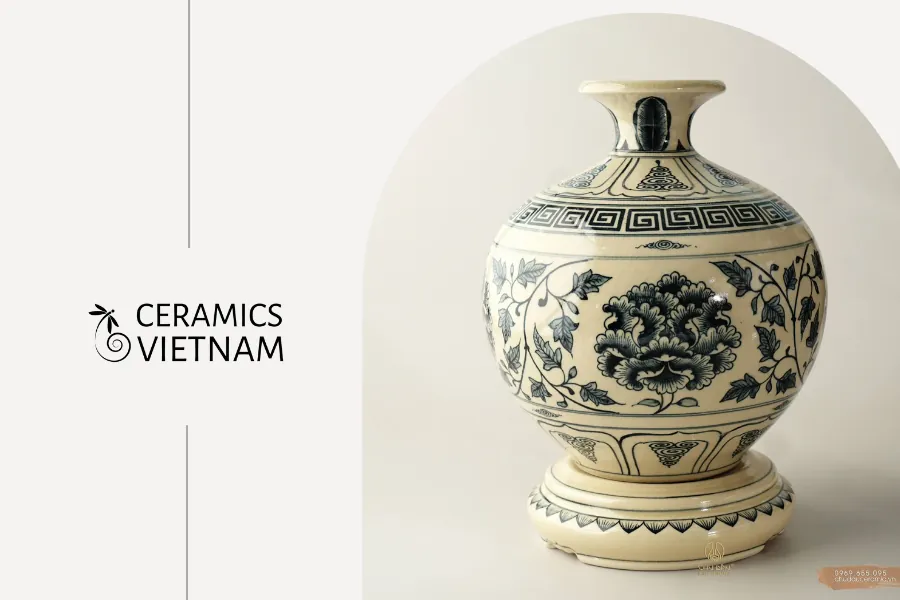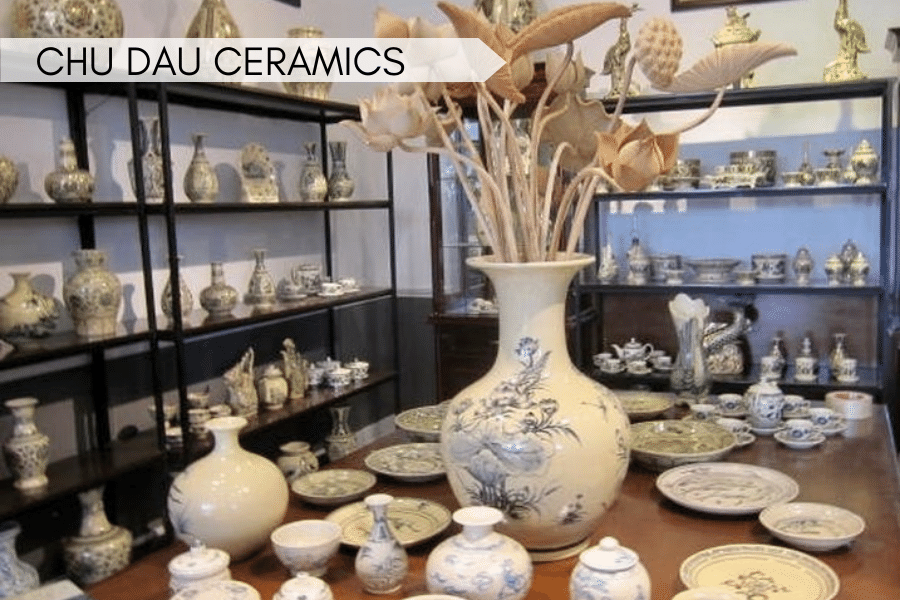We delve into the background of Chu Dau ceramics, exploring its historical significance and the rich artistic traditions associated with this craft.
Chu Dau ceramics have a profound historical importance that dates back centuries. The region of Chu Dau in Vietnam has been a hub for ceramic production, contributing to the nation’s cultural heritage. The ceramics from Chu Dau bear witness to the passage of time, preserving stories of the local community and reflecting the historical evolution of Vietnamese craftsmanship.
The artistic traditions of Chu Dau ceramics are deeply rooted in the cultural fabric of Vietnam. Skilled artisans in this region have passed down their expertise from generation to generation, creating a legacy of craftsmanship that is both revered and unique. These traditions encompass a wide range of techniques, from shaping and molding to glazing and firing, all of which contribute to the distinct charm of Chu Dau ceramics.
As we explore the background, it becomes evident that Chu Dau ceramics not only represent a tangible aspect of Vietnam’s past but also serve as a living testament to the resilience of artistic traditions that continue to thrive in the contemporary era.
Chu Dau Ceramics Village is situated in Minh Tan, Thai Tan communes, Nam Sach district, Hai Duong province.The village is located approximately over 10km from Hai Duong city. This is a renowned traditional pottery village with numerous areas dedicated to ceramic production and impressive tourist attractions
Chu Dau Ceramics production

Lam Flowers from Chu Dau, exquisite ceramics for export
The section on Chu Dau Ceramics Production delves into the craftsmanship and distinctive features that make these ceramics highly esteemed.
- Artisan Craftsmanship:
-
- Skilled Artisans: Chu Dau ceramics owe much of their acclaim to the expertise of skilled artisans. These craftsmen, often carrying on family traditions, undergo rigorous training to master the intricate techniques involved in creating these ceramics. Their proficiency is not only a testament to their dedication but also a key factor in ensuring the high quality and authenticity of Chu Dau products.
- Traditional Techniques: The production of Chu Dau ceramics is deeply rooted in traditional techniques passed down through generations. These techniques encompass every stage of the ceramic-making process, from shaping the raw clay to the meticulous glazing and firing. The commitment to preserving these age-old methods contributes to the cultural continuity and authenticity of Chu Dau ceramics, setting them apart in the realm of traditional craftsmanship.
- Unique Characteristics:
- Distinctive Glazes: One of the hallmarks of Chu Dau ceramics lies in their distinctive glazes. Artisans employ a range of glazing techniques that result in unique finishes, capturing the essence of the region’s natural beauty. Whether it be the lustrous sheen of a vibrant glaze or the subtle nuances of earthy tones, the distinctive glazes contribute to the visual allure and individuality of each Chu Dau piece.
- Intricate Designs: Chu Dau ceramics are renowned for their intricate and elaborate designs. Artisans draw inspiration from various sources, including nature, folklore, and cultural symbols, to create patterns that are not only aesthetically pleasing but also hold deeper meanings. The meticulous attention to detail in these designs showcases the craftsmanship’s artistic finesse, making each piece a work of art that tells a unique story.
In essence, the Chu Dau Ceramics Production is a marriage of artisan skill and traditional techniques, resulting in pieces that stand out through their distinctive glazes and intricate designs, thus cementing their status as exemplars of fine ceramic craftsmanship
Lam Flowers from Chu Dau, exquisite ceramics for export

Lam Flowers from Chu Dau, exquisite ceramics for export
Inheriting the grace, softness, and intricate details of Ly Dynasty ceramics, combined with the strong artistic elements of Tran Dynasty ceramics and the market demands of Southeast Asia and Western Europe, Chu Dau ceramic blue flowers from the 15th century have been exported worldwide.
The history of Chu Dau ceramic blue flowers dates back to the 13th to the 16th century, based on artifacts unearthed from the Chu Dau ceramic kiln site in Nam Sach, Hai Duong. Archaeologists have identified Chu Dau as the origin of this ceramic style. In the Vietnamese ceramic market, there has been a saying since ancient times: “Porcelain from Jiangxi, Chu Dau ceramics,” indicating the popularity and widespread use of this renowned ceramic style.
The distinctive feature of Chu Dau ceramics lies in the characteristic blue enamel painting on a white background. The simplicity and refinement of the designs, executed with the skillful brushstrokes of ceramic artisans, have puzzled researchers who found it challenging to reconcile the idea that Vietnamese ceramics could produce such exquisite products. Many mistakenly believed these ceramics originated from ancient China due to the similarity in decorative themes with Yuan Dynasty porcelain.
Notably, Chu Dau ceramics have left a lasting imprint globally, with artifacts discovered in various countries across Southeast Asia, including Japan, Turkey, England, the Netherlands, Sweden, and France. Excavations in the ancient capital of Trowulan, part of the Majapahit dynasty in East Java, Indonesia, revealed numerous Chu Dau ceramic artifacts. Particularly in Japan, Chu Dau ceramic tea bowls imported through ancient trade routes are highly esteemed as treasures by contemporary tea masters.
Taking advantage of indigenous white clay, Chu Dau ceramics exhibit a denser and sturdier texture compared to Ly and Tran Dynasty ceramics. Artisans achieved this by incorporating additional kaolin into the clay. The decorative motifs on Chu Dau ceramics showcase a strong influence of painting techniques, with delicate representations of mythical creatures, floral patterns, landscapes, and water scenes, displaying a wide range of vibrant and sharp details.
The intriguing aspect of Chu Dau ceramics is the discovery of numerous artifacts from various parts of the world, indicating extensive trade relationships beyond Vietnam’s borders. Excavations in the ancient city of Trowulan during the Majapahit dynasty, East Java, Indonesia, yielded numerous Chu Dau ceramic artifacts. In particular, many large-sized items such as vases, dishes, and jars, as well as smaller figurines depicting birds, fish, elephants, horses, were discovered globally, highlighting the widespread reach of Chu Dau ceramics.
Chu Dau ceramics were the first Vietnamese ceramics to utilize multi-firing techniques, producing ceramics with tri-color and quintuple-color designs. After completing the underglaze painting, the products were fired in the kiln, and then additional colors were painted on the enamel to illustrate the blue color, followed by a light firing to preserve the hues. These processes demanded meticulous craftsmanship and perfect kiln firing techniques, showcasing the high level of ceramic artistry achieved by Chu Dau artisans.
The outstanding beauty of Chu Dau ceramic blue flowers truly became known through artifacts recovered from a sunken ship off the coast of Cu Lao Cham, discovered in the 1990s. The vast number of artifacts from the shipwreck, ranging from human figurines, mythical creature statues, bowls, dishes to more compact and delicate items like cosmetic boxes, vases, and small water containers, astonished archaeologists and collectors alike. Based on these shipwreck artifacts, researchers concluded that Chu Dau ceramic blue flowers are a rare and exquisite type of Vietnamese ceramics that rivals other regional ceramics in terms of quality and artistry.














Leave a reply